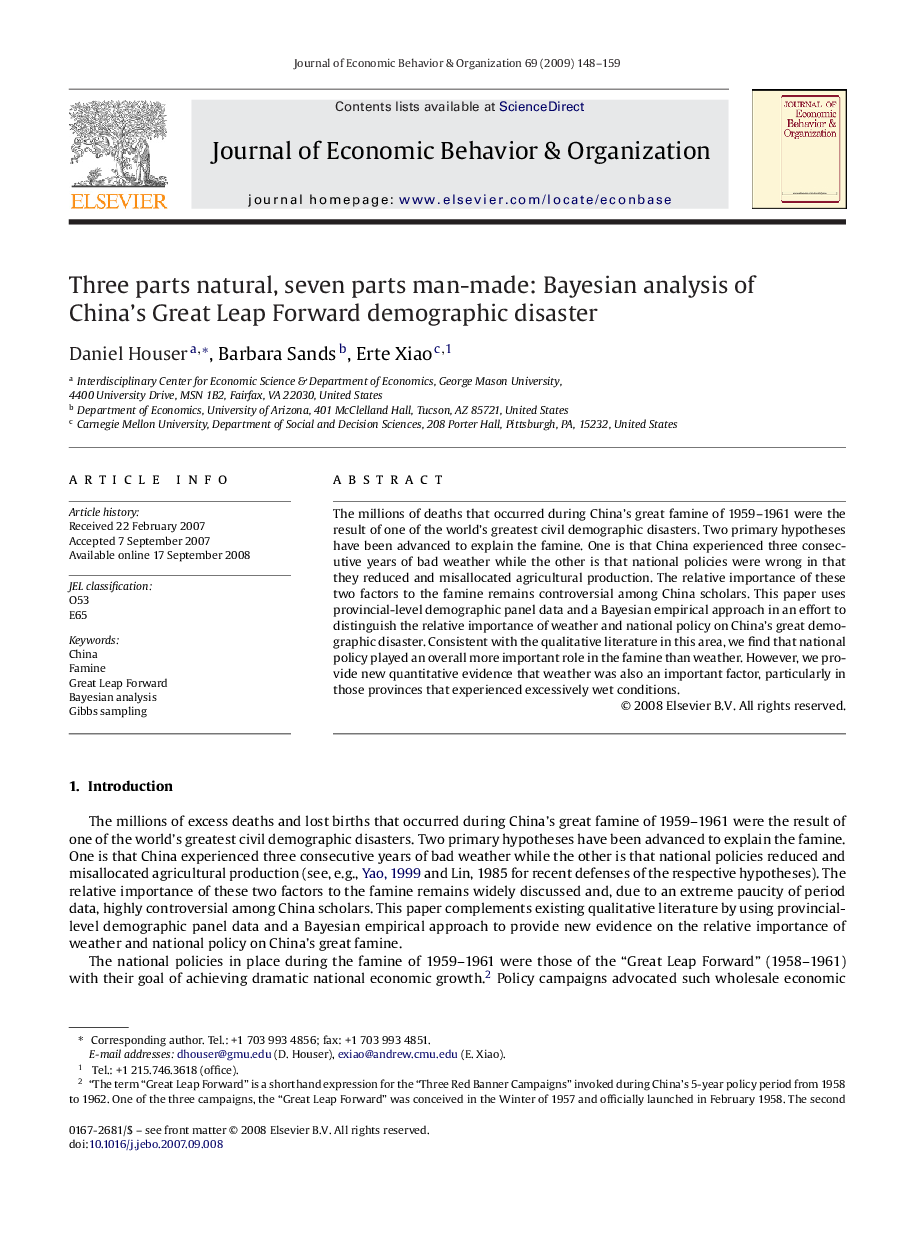| کد مقاله | کد نشریه | سال انتشار | مقاله انگلیسی | نسخه تمام متن |
|---|---|---|---|---|
| 884378 | 912388 | 2009 | 12 صفحه PDF | دانلود رایگان |

The millions of deaths that occurred during China’s great famine of 1959–1961 were the result of one of the world’s greatest civil demographic disasters. Two primary hypotheses have been advanced to explain the famine. One is that China experienced three consecutive years of bad weather while the other is that national policies were wrong in that they reduced and misallocated agricultural production. The relative importance of these two factors to the famine remains controversial among China scholars. This paper uses provincial-level demographic panel data and a Bayesian empirical approach in an effort to distinguish the relative importance of weather and national policy on China’s great demographic disaster. Consistent with the qualitative literature in this area, we find that national policy played an overall more important role in the famine than weather. However, we provide new quantitative evidence that weather was also an important factor, particularly in those provinces that experienced excessively wet conditions.
Journal: Journal of Economic Behavior & Organization - Volume 69, Issue 2, February 2009, Pages 148–159